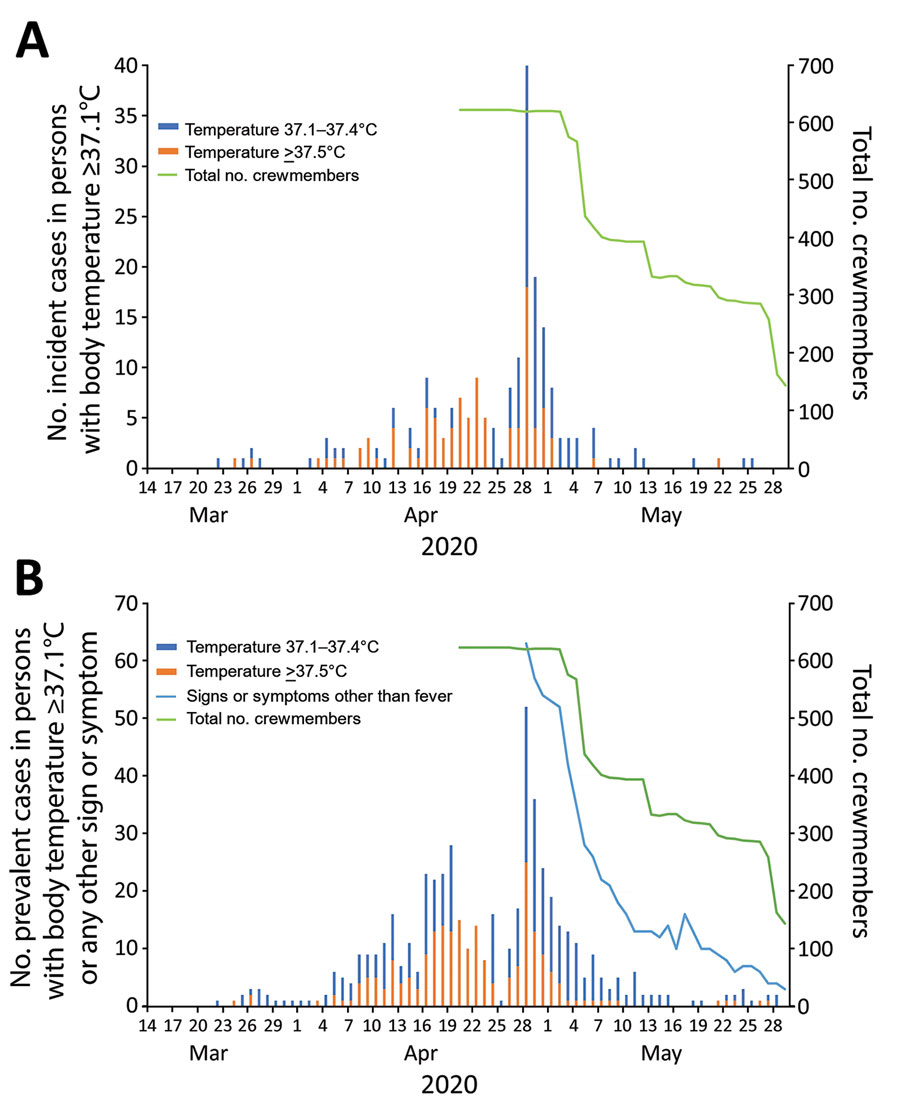Epidemiology of Coronavirus Disease Outbreak among Crewmembers on Cruise Ship, Nagasaki City, Japan, April 2020
Haruka Maeda
1, Eiichiro Sando
1, Michiko Toizumi
1, Yuzo Arima
1, Tomoe Shimada, Takeshi Tanaka, Masato Tashiro, Ayumi Fujita, Katsunori Yanagihara, Hayato Takayama, Ikkoh Yasuda, Nobuyuki Kawachi, Yoshitaka Kohayagawa, Maiko Hasegawa, Katsuaki Motomura, Rie Fujita, Katsumi Nakata, Jiro Yasuda, Koichi Morita, Shigeru Kohno, Koichi Izumikawa, Motoi Suzuki
2, and Konosuke Morimoto
2
Author affiliations: Nagasaki University, Nagasaki, Japan (H. Maeda, E. Sando, M. Toizumi, T. Tanaka, M. Tashiro, A. Fujita, K. Yanagihara, H. Takayama, I. Yasuda, N. Kawachi, J. Yasuda, K. Morita, S. Kohno, K. Izumikawa, K. Morimoto); Fukushima Medical University, Fukushima, Japan (E. Sando, I. Yasuda); National Institute of Infectious Diseases, Tokyo, Japan (Y. Arima, T. Shimada, M. Suzuki); Disaster Medical Center of Japan, Tokyo (Y. Kohayagawa); Nagasaki Prefecture Government, Nagasaki (M. Hasegawa, K. Nakata); Nagasaki City Public Health Center, Nagasaki (K. Motomura); Northern Nagasaki Public Health Center, Nagasaki (R. Fujita)
Main Article
Figure 1

Figure 1. Number of incident cases of persons with body temperature >37.1°C and number of prevalent cases of persons with body temperature >37.1°C or any sign or symptom of coronavirus disease on a cruise ship, Nagasaki, Japan, March 14–May 29, 2020. A) Number of persons with illness onset, by date. Crewmembers started disembarking on May 3. B) Daily number of crewmembers who reported having a body temperature >37.1°C or coronavirus disease signs or symptoms. Signs or symptoms other than fever: cough, nasal congestion, sore throat, headache, olfactory dysfunction, taste disorder, conjunctival congestion, diarrhea, myalgia or arthralgia, fatigue, shortness of breath, and nausea or vomiting.
Main Article
Page created: June 28, 2021
Page updated: August 17, 2021
Page reviewed: August 17, 2021
The conclusions, findings, and opinions expressed by authors contributing to this journal do not necessarily reflect the official position of the U.S. Department of Health and Human Services, the Public Health Service, the Centers for Disease Control and Prevention, or the authors' affiliated institutions. Use of trade names is for identification only and does not imply endorsement by any of the groups named above.
